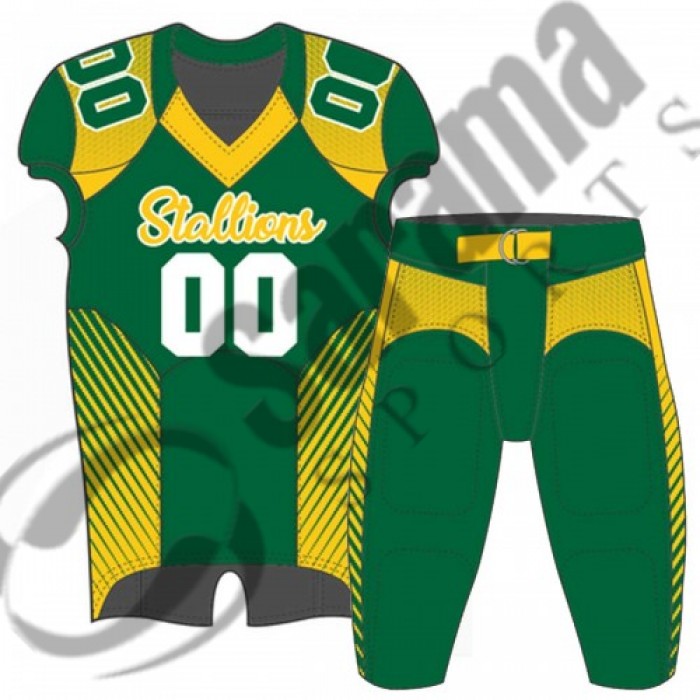Click Image for Gallery

Pads are necessary to absorb the many physical blows a player takes during a game and protect every part of his body.
Football cleats come in 1/2-inch, 5/8-inch, 3/4-inch, and 1-inch
lengths. Wearing the right cleat is definitely important for traction.
If a player doesn’t have the proper traction indoors or outside on a
muddy surface, he simply can’t do his job and perform at the highest
level. What type of cleat you use depends on a number of factors:
-
Conditions on the field: The shorter cleat,
which makes a player less prone to injury, is worn on dry, firm fields
because it provides the ideal traction for these fast fields. On a
slippery grass field, a player — especially a big lineman across the
line of scrimmage — needs to dig deep to gain traction. In that
situation, the player switches to a 3/4- or 1-inch cleat, depending on
how he’s maneuvering (stopping and going) during warm-ups.
-
Conditions on the field: The shorter cleat,
which makes a player less prone to injury, is worn on dry, firm fields
because it provides the ideal traction for these fast fields. On a
slippery grass field, a player — especially a big lineman across the
line of scrimmage — needs to dig deep to gain traction. In that
situation, the player switches to a 3/4- or 1-inch cleat, depending on
how he’s maneuvering (stopping and going) during warm-ups.
Field material: For artificial surfaces,
most players wear a shoe that has a sole of dozens of rubber-nubbed,
1/2-inch cleats. Some linemen prefer a basketball-type shoe, especially
on indoor turf where there’s no chance of rain and the surface isn’t as
slick.
American Football Uniform
Description
Pads are necessary to absorb the many physical blows a player takes during a game and protect every part of his body.
Football cleats come in 1/2-inch, 5/8-inch, 3/4-inch, and 1-inch
lengths. Wearing the right cleat is definitely important for traction.
If a player doesn’t have the proper traction indoors or outside on a
muddy surface, he simply can’t do his job and perform at the highest
level. What type of cleat you use depends on a number of factors:
-
Conditions on the field: The shorter cleat,
which makes a player less prone to injury, is worn on dry, firm fields
because it provides the ideal traction for these fast fields. On a
slippery grass field, a player — especially a big lineman across the
line of scrimmage — needs to dig deep to gain traction. In that
situation, the player switches to a 3/4- or 1-inch cleat, depending on
how he’s maneuvering (stopping and going) during warm-ups.
-
Conditions on the field: The shorter cleat,
which makes a player less prone to injury, is worn on dry, firm fields
because it provides the ideal traction for these fast fields. On a
slippery grass field, a player — especially a big lineman across the
line of scrimmage — needs to dig deep to gain traction. In that
situation, the player switches to a 3/4- or 1-inch cleat, depending on
how he’s maneuvering (stopping and going) during warm-ups.
Field material: For artificial surfaces,
most players wear a shoe that has a sole of dozens of rubber-nubbed,
1/2-inch cleats. Some linemen prefer a basketball-type shoe, especially
on indoor turf where there’s no chance of rain and the surface isn’t as
slick.
Tags:
American Football Uniform
 +92 305 6165772
+92 305 6165772

